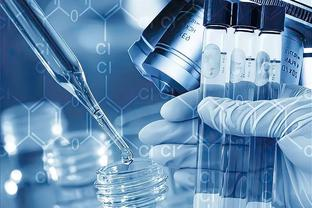Due to the advantages of fast curing, energy saving and environmental protection, light curing products are widely used in a wide range of fields. They were first mainly used in the field of wood coating. In recent years, with the development of new initiators, active diluents and photosensitive oligomers, the application of UV curable coatings has gradually expanded to the fields of paper, plastics, metals, fabrics, automobile parts and so on. The following will briefly introduce the application of several light curing technologies in different fields.
UV curing 3D printing
Light curing 3D printing is one of the rapid prototyping technologies with the highest printing accuracy and commercialization. It has many advantages, such as low energy consumption, low cost, high precision, smooth surface and good repeatability. It has been widely used in aerospace, automobile, mold manufacturing, jewelry design, medical treatment and other fields.
For example, by printing a rocket engine prototype with complex structure and analyzing the flow mode of gas, it is helpful to design a rocket engine with more compact structure and higher combustion efficiency, which can effectively improve the R & D efficiency of complex parts and shorten the automobile R & D cycle; You can also print out the mold or reverse mold directly, so as to make the mold quickly and so on.
Light curing 3D printing technology has developed stereo lithography molding technology (SLA), digital projection technology (DLP), 3D inkjet molding (3DP), continuous liquid level growth (clip) and other technologies [3]. As its printing material, photosensitive resin for light curing 3D printing has also made great progress, and is developing in the direction of functionalization according to the needs of application
Electronic packaging UV curing products
The innovation of packaging technology promotes the transition of packaging materials from metal packaging and ceramic packaging to plastic packaging. Epoxy resin is widely used in plastic packaging. Excellent mechanical properties, heat and moisture resistance are the premise of high-quality packaging. The fundamental problem determining the performance of epoxy resin is not only the structure of the main body of epoxy resin, but also the influence of curing agent.
Compared with the thermal curing method adopted by conventional epoxy resin, cationic UV curing not only has better chemical storage stability of photoinitiator, but also the curing speed of the system is faster. The curing can be completed in tens of seconds, with extremely high efficiency, no oxygen polymerization inhibition and deep curing. These advantages increasingly highlight the importance of cationic UV curing technology in the field of electronic packaging.
With the rapid development of semiconductor technology, electronic components tend to be highly integrated and miniaturized. Light weight, high strength, good heat resistance and excellent dielectric properties will be the development trend of new high-performance epoxy packaging materials. Light curing technology will play a more important role in the development of electronic packaging industry.
Printing ink
In the field of packaging and printing, flexographic printing technology is used more and more, accounting for an increasing proportion. It has become the mainstream technology of printing and packaging, and is the inevitable trend of development in the future.
There are many types of flexographic inks, mainly including the following categories: water-based inks, solvent based inks and ultraviolet curing (UV) inks. Solvent based ink is mainly used for non absorbent plastic film printing; Water based ink is mainly used in newspaper, corrugated board, cardboard and other printing materials; UV ink is widely used, and it has good printing effect in plastic film, paper, metal foil and other materials [4].
At present, UV printing ink is very popular for its high quality and environmental protection, and has a very good development prospect.
Flexographic UV ink is widely used in packaging printing. Flexographic UV ink has the following advantages
(1) Flexographic UV ink has no solvent emission, safe and reliable use, high melting point and no pollution, so it is suitable for making food, medicine, beverage and other packaging with high requirements for safe, non-toxic packaging materials.
(2) When printing, the physical properties of the ink remain unchanged, there is no volatile solvent, the viscosity remains unchanged, and the printing plate will not be damaged, resulting in plate pasting, plate stacking and other phenomena. When printing with ink with high viscosity, the printing effect is still good.
(3) The ink drying speed is fast and the product printing efficiency is high. It can be widely used in various printing methods, such as plastics, paper, film and other substrates.
With the development of new oligomer structure, active diluent and initiator, the future application scope of UV curing products is immeasurable, and the market development space is unlimited.
Post time: Apr-20-2022













